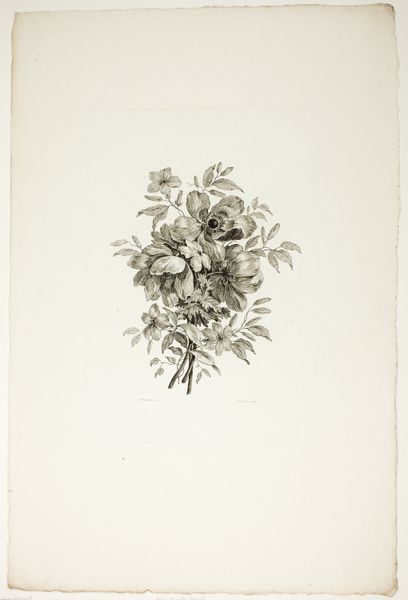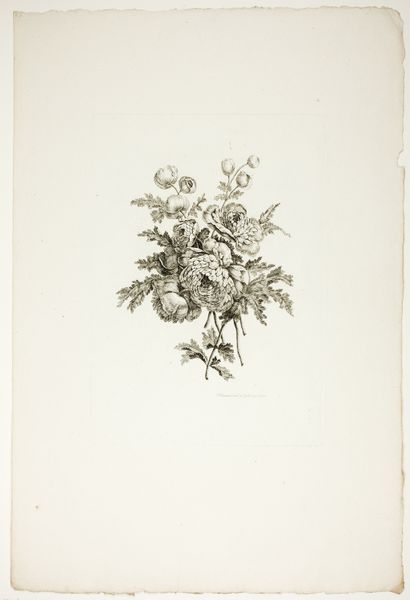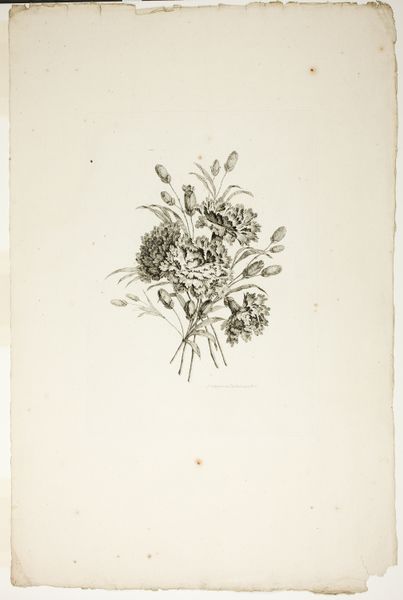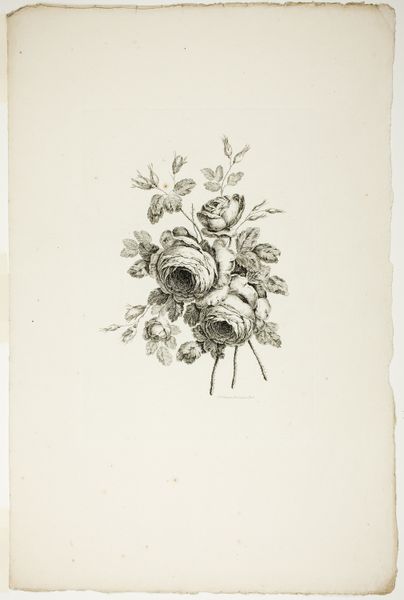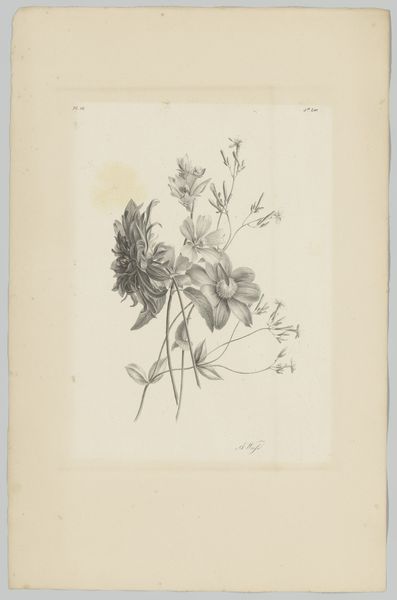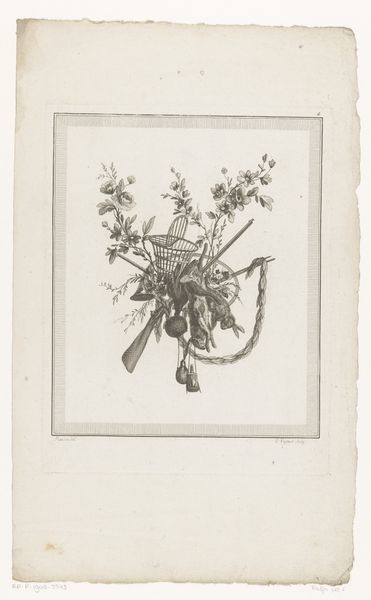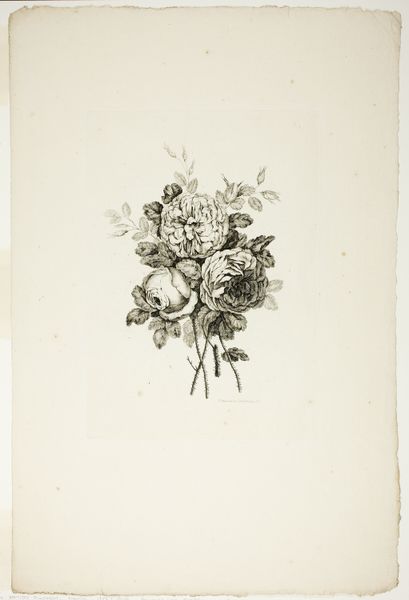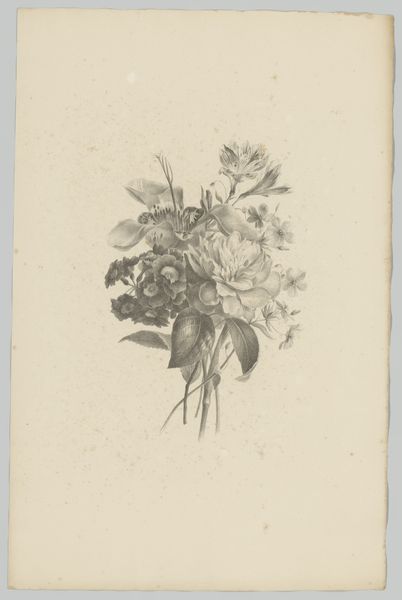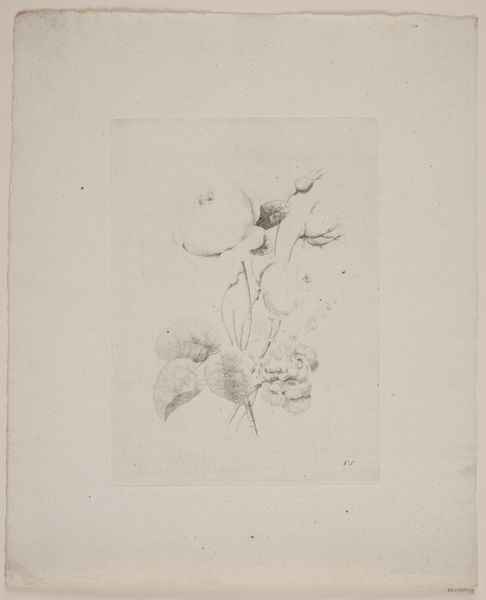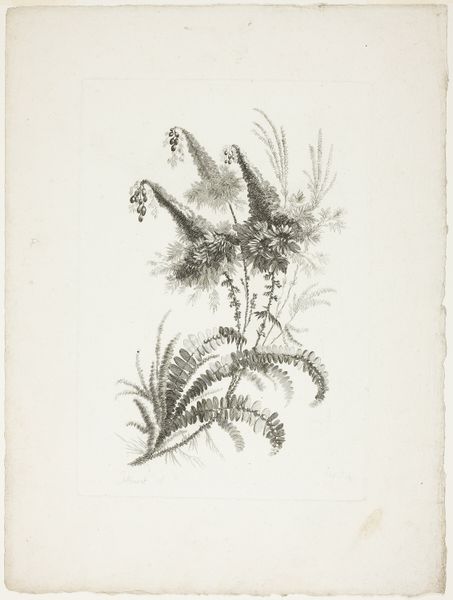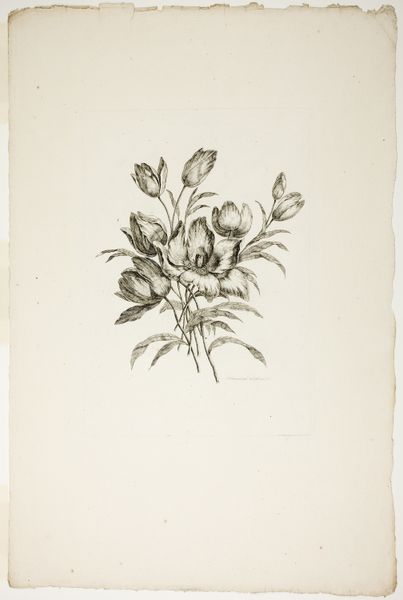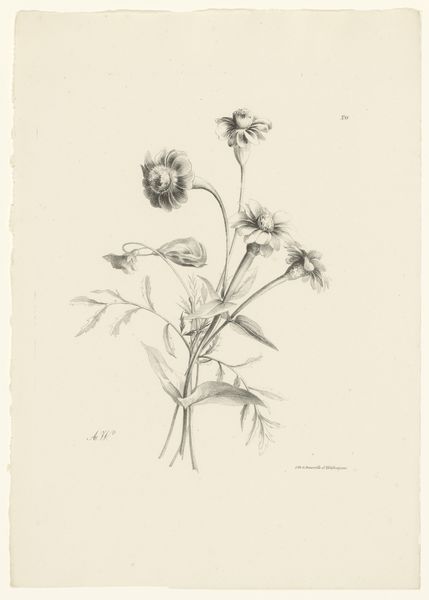
Bouquet with Daffodils, from Collection of Different Bouquets of Flowers, Invented and Drawn by Jean Pillement and Engraved by P. C. Canot Possibly 1760
0:00
0:00
drawing, print, etching, paper
#
drawing
#
baroque
# print
#
etching
#
paper
#
line
Dimensions: 300 × 212 mm (plate); 539 × 363 mm (sheet)
Copyright: Public Domain
Curator: Looking at this print, I immediately appreciate its delicacy. The fine lines give it a light, almost ethereal quality. Editor: This is "Bouquet with Daffodils," an etching on paper from a collection of floral designs, potentially dating back to 1760. The prints were invented and drawn by Jean Pillement and engraved by P.C. Canot. Considering this date, the industrial context behind artistic productions shifts dramatically and one starts wondering if there is some critique in this series, related to the consumption and commercialization of images and flowers as an aesthetic commodity. Curator: The choice of etching allowed for the detailed depiction of each petal and leaf. It’s interesting to consider how such prints were distributed and consumed during the Baroque period. What purpose did it serve beyond just being decorative? Editor: Flower bouquets became a highly symbolic commodity and art was also affected. We can interpret it as an intersection between natural history and commercial aspiration. Did having Canot as engraver allowed to Pillement to reach a new, wider public of collectors, scientists, and hobbyists, democratizing art and botanical knowledge? Curator: Exactly, and consider the labour. Pillement provided the original design, while Canot translated that into the etched print. What's the social structure around art workshops during that period? These objects existed to train engravers to meet very specific demands or create visual dictionaries that shaped natural science or domestic ornamentation. Editor: In the case of daffodils, they can be interpreted with meanings ranging from resilience and rebirth to unrequited love and vanity. With the social conditions surrounding its production we can interpret this image as both a delicate natural study, and a commodity deeply enmeshed with emerging capitalistic ambitions. Curator: Thinking about the act of etching itself, the copper plate becoming a means to replicate and disseminate this vision... it moves away from the unique artist's gesture toward something mass-produced, repeatable. Editor: So, perhaps these aren’t merely innocent floral arrangements but early signals of how art became entwined with consumer culture. They embody this era, and show that visual beauty and commerce were tied to socioeconomic shifts that have determined society since then. Curator: Indeed, looking beyond the purely aesthetic lets us understand this image and its era better. Editor: It's an elegant dance of image, economy and social class.
Comments
No comments
Be the first to comment and join the conversation on the ultimate creative platform.
